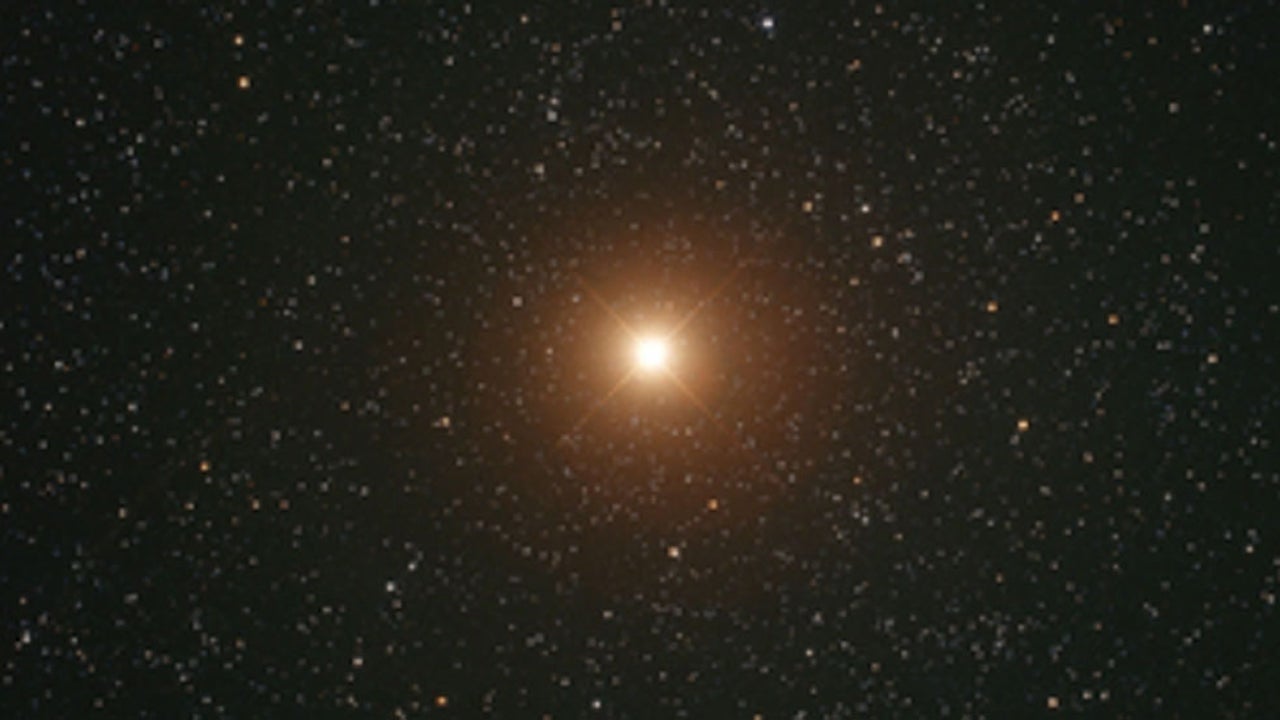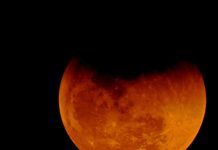This article explores the gradual dimming of Orion’s giant red star, called the Betelgeuse.The constellation Orion is one of the most recognizable patterns in the night sky, visible around the world. The constellation is very familiar with people and is also commonly referred to as hunter constellation. But according to recent data, Orion’s giant red star which is called Betelgeuse, and is located at the hunter’s right shoulder, is the dimmest it’s been in almost a century.
Till now Betelgeuse was being counted among the 10 brightest stars in the sky. However, the red giant began dimming in October, and by mid-December, the star had faded so much it wasn’t even in the top 20, Villanova University’s Edward Guinan reported in an Astronomer’s Telegram. He reported, “Now the outline of Orion is noticeably different with Betelgeuse so faint.”
Astronomers however argue, dimming alone isn’t all that odd for a star like Betelgeuse. Because it’s known as a variable star, as its shifts in brightness have been closely studied for decades. What has intrigued astronomers this time is that for one of the sky’s most prominent points of light to fade so noticeably is not usual. This has prompted the scientific community to consider the possibility that something more interesting could be about to happen:Betelgeuse might explode and die, briefly blazing brighter than the full moon before vanishing from our night sky forever.
This is a known fact that huge, red stars like Betelgeuse live fast and die violently, exploding in stellar events called supernovae that are visible across vast distances. So, while Betelgeuse is a relatively young star—only about 8.5 million years old—astronomers know that it is nearing the end of its life.
However, the biggest question now is when it will explode in a supernova?
According to UC Berkeley’s Sarafina Nance, who studies Betelgeuse and stellar explosions, “Disclaimer: I don’t think it’s going to explode any time soon,” she added during an interview with National Geographic. “But I am excited [for] when it does.”
Let’s know more about Betelgeuse
The supergiant star’s formal name is derived from a mistranslated Arabic name meaning “the hand of Orion” (yad al-jauza). The star is also referred to as Alpha Orionis, a designation normally reserved for the brightest star in a constellation, even though Rigel, at Orion’s left foot, is actually brighter.
Betelgeuse is huge and bloated, wielding 20 times the sun’s heft. If you swapped out the sun and replaced it with Betelgeuse, the red star would swallow Mercury, Venus, Earth, Mars, the asteroid belt, a couple of spacecraft, and maybe Jupiter; Saturn would suddenly be quite toasty.
It’s also relatively close to our solar system, in cosmic terms, estimated to be in the neighborhood of 600 light-years away. So, when this star detonates, the explosion will be bright enough to cast shadows on Earth at night and will be visible during the day for a few months, at least. Then, the star will fade from our sky.
How will it impact us when Betelgeuse blows?
The life on earth is not going to get affected in any way. Even though Betelgeuse is nearby in astronomical terms, it’s nowhere near close enough for the explosion to affect life on Earth. Astronomers calculate that it’ll take about six million years for the shock wave and any cold, diffuse debris to reach the solar system, and even then, the sun’s protective bubble will shield us from the splattered star guts.
Instead, it is advised that when it explodes one should get to a clear northern sky as quickly as possible and enjoy the show.
When exactly will it occur?
In theory, all that ejected dust could shroud and darken the nearly dead star, causing it to dim from our perspective right before it goes supernova. In practice, though, it’s not yet certain whether stars are darkest before they blow—no one has yet been able to closely study a doomed star before, during, and after its demise.
Moreover, Betelgeuse is classified as a semiregular variable star, meaning that its brightness semiregularly changes. Millennia ago, Australian Aborigines noted the star’s fluctuating luminosity, and British astronomer John Herschel recorded the phenomenon in 1836.
More recently, the American Association of Variable Star Observers has been compiling observations of Betelgeuse’s fits and starts. Decades of photometric data show that Betelgeuse brightens and dims in cycles, with one notable cycle vacillating on a roughly six-year timescale, and another rising and falling every 425 days or so.
Edward Guinan mentions, “The star is not strictly periodic, and the range of light variations changes from cycle to cycle,” noting that right now, Betelgeuse is the dimmest it has been since more precise monitoring began around a century ago; the second-duskiest observations on record date back to the mid-1920s. And the reasons for these quasiperiodic changes in variations are somewhat unclear.
Edward Guinan also adds that Betelgeuse is dramatically dimmer now because two of its cycles are overlapping at minimal brightness. In essence, the star is approaching the dimmest points in both its six-year and 425-day cycles, an intersection that makes the star’s normal fluctuations appear much more sinister. After looking through 25 years’ worth of prior data, Edward Guinan suspects that the star will continue to fade for another couple of weeks before gradually turning back on.
But, he says, “if it keeps getting fainter, then all bets are off.”
And if that happens, the star will most likely explode within the next million years, and perhaps as soon as 100,000 years from now. Or it could be that Betelgeuse may have already exploded but we have not yet seen it happen.
It takes light from this star about 600 years to reach us, meaning that we’re actually observing the star as it was 600 years ago. If we do see it detonate in our sky any time soon, that means the star actually blew up sometime during the European Middle Ages, and light from the blast is just reaching Earth.














